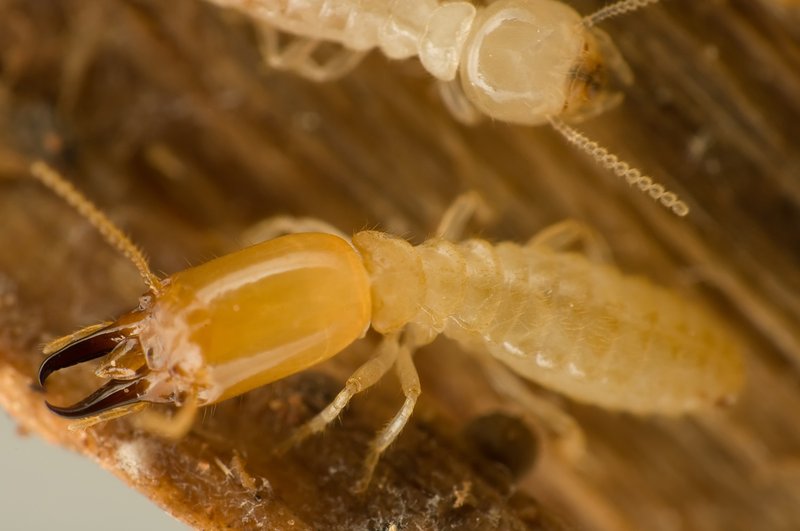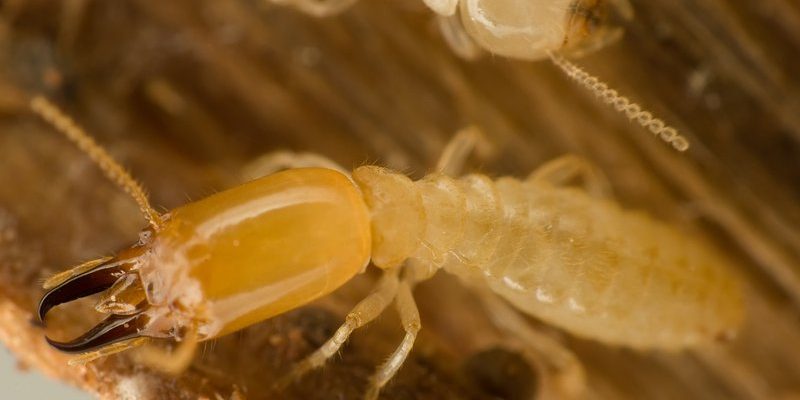
Termites are fascinating creatures often misunderstood and unfairly labeled as pests. These small insects are members of the order Isoptera and play a critical role in our ecosystems. Imagine a tiny architect constantly breaking down wood and plant matter, recycling nutrients back into the soil. That’s essentially what termites do! They contribute to soil health and support the growth of various plants by decomposing cellulose, a component found in wood.
Many people might think of termites solely as homewreckers, and while they can cause significant damage to wooden structures, their ecological benefits are enormous. In fact, more than 3,000 species of termites exist worldwide, showcasing a vast diversity that intrigues scientists and nature lovers alike. So, let’s dive deeper into the world of termites, exploring their habits, types, and what makes them so unique.
What Are Termites?
Termites are social insects that live in colonies, which can range from a few hundred to millions of individuals. They are closely related to cockroaches, sharing a common ancestor. These insects are often referred to as “wood ants” because of their affinity for consuming wood and plant matter, primarily made up of cellulose. Their diet makes them essential players in breaking down dead trees and other organic materials.
One of the most interesting aspects of termites is their social structure. A termite colony typically consists of three primary castes: workers, soldiers, and reproductive individuals. The worker termites are responsible for foraging for food, building and maintaining the nest, and caring for the young. Soldiers protect the colony from threats, while reproductive termites, often referred to as the queen and king, are responsible for mating and producing new termites. This organized structure helps the colony thrive.
Types of Termites
There are several different types of termites, each with unique characteristics and behaviors. The most common categories include subterranean, drywood, and dampwood termites. Each of these types occupies distinct habitats and has specific dietary preferences.
Subterranean termites build their nests underground, often near or inside wooden structures. They are notorious for their destructive habits, as they can cause severe damage to homes if left unchecked. In contrast, drywood termites infest dry wood, living in the wood itself rather than in the soil. This allows them to thrive in attics, furniture, and other wooden items without needing soil access. Lastly, dampwood termites prefer wood that has already begun to rot and requires moisture, making them common in decaying trees.
Termite Habitats
Termites thrive in diverse habitats, ranging from forests and grasslands to urban environments. They prefer warm, moist climates, which are ideal for their reproductive and foraging activities. In the United States, for instance, subterranean termites are commonly found in the southern regions where temperatures are milder, while drywood termites are more prevalent in warmer coastal areas.
The specific habitat of a termite colony can significantly affect its behavior and diet. For instance, subterranean termites build extensive tunnels underground, allowing them to search for food sources like roots and wooden structures. Meanwhile, drywood termites often infest furniture or buildings, leading to challenges in detection and control.
The Role of Termites in the Ecosystem
Termites serve various essential functions in their environments, making them critical players in our ecosystems. One of their primary roles is decomposing cellulose, which is found in plant material. By breaking down this tough substance, termites recycle nutrients back into the soil, promoting plant growth and contributing to soil health.
Furthermore, termites create tunnels in the soil, which improve aeration and water infiltration. This process helps maintain soil structure and encourages healthy ecosystems. Their activity supports other organisms, such as plants and fungi, and fosters a diverse range of species within their habitats.
Termite Anatomy
Understanding termite anatomy helps us appreciate how these tiny insects function. A typical termite has three main body parts: the head, thorax, and abdomen. The head contains strong mandibles that allow termites to chew through wood and other plant matter. They have compound eyes, but many species are blind and rely on other senses for navigation.
The thorax, located between the head and abdomen, houses the legs that allow them to move and forage. The abdomen contains important organs responsible for digestion and reproduction. Interestingly, termites have a unique digestive system that includes symbiotic microorganisms, enabling them to break down cellulose efficiently.
Diet and Feeding Habits
Termites primarily feed on cellulose, which is found in wood, leaves, and other plant materials. Their diet is crucial for their survival and plays a role in their ecological contribution. The process of breaking down cellulose relies on the help of tiny microorganisms like bacteria and protozoa that live in their guts. This symbiotic relationship enables termites to digest materials that many other organisms cannot.
While termites are often associated with eating wood, they also feed on leaf litter, decaying plant matter, and even soil rich in organic material. Their feeding habits can vary depending on the species and habitat. For instance, drywood termites consume wood without needing contact with soil, while subterranean termites often forage for food underground.
Life Cycle of a Termite
The life cycle of a termite consists of several stages: egg, nymph, and adult. After mating, the queen termite lays eggs, which hatch into nymphs. Unlike some insects, nymphs resemble miniature adults and undergo multiple molts as they grow. The time it takes for nymphs to develop into adults varies by species and environmental conditions.
As termites mature, they assume different roles within the colony. Some nymphs become workers, contributing to the colony’s maintenance and food gathering. Others develop into soldiers, protecting the colony from predators, while some become reproductive individuals, tasked with continuing the cycle by laying eggs.
Signs of Termite Infestation
Spotting the signs of termite infestation early can save homeowners from costly damage. One of the most common indicators is the presence of mud tubes. These tubes, made of soil and saliva, are built by subterranean termites to travel between their nest and food sources. You might notice these tubes along foundation walls or in crawl spaces.
Another sign is the appearance of discarded wings. During their mating season, reproductive termites leave their colonies to establish new ones, shedding their wings after finding a suitable location. You might also notice hollowed wood, which indicates that termites have been feeding inside. Tapping on wooden structures can reveal hollow sounds, suggesting a potential infestation.
Preventing Termite Infestations
Prevention is key when it comes to termites. There are several practical steps you can take to reduce the risk of an infestation. First, keep firewood and other wooden materials away from the foundation of your home. This limits access for termites that might be searching for food.
Furthermore, ensure proper drainage around your home. Standing water can attract termites and create a conducive environment for their growth. Regularly inspect wooden structures for signs of damage, and consider using chemical barriers or physical barriers if you live in an area prone to termite activity. Establishing regular pest control inspections can help catch any signs of termites before they become a significant problem.
Termite Control Methods
If you suspect a termite infestation, taking swift action is critical. There are a few methods for controlling termites, starting with preventive treatments, as discussed earlier. If an infestation is confirmed, various approaches exist, including baiting systems, liquid insecticides, and even natural remedies.
Baiting systems work by attracting termites to a bait station containing a slow-acting insecticide. When termites consume the bait, they return to the colony, eventually killing the queen and eliminating the colony. Liquid insecticides can be applied to soil or wooden structures to create a barrier, preventing termites from accessing critical areas.
Termites are often seen as pests, but they play an essential role in the ecosystem. Their ability to break down cellulose and recycle nutrients is invaluable. By understanding termites, we can appreciate their ecological significance while also taking steps to prevent infestations at home. Remember, knowledge is power when it comes to managing these remarkable insects!
FAQ
What is a termite’s lifespan?
The lifespan of a termite varies significantly depending on its caste and species. Worker and soldier termites generally live for about 1 to 2 years. In contrast, reproductive termites, including queens, can live for a decade or more under the right conditions. This long lifespan allows termite colonies to thrive and expand, causing potential issues for homeowners.
How do termites communicate?
Termites communicate primarily through pheromones, which are chemical signals that convey messages to other termites. For example, a termite might release pheromones to signal the presence of food or alert the colony to danger. Additionally, termites use tactile communication through touch and vibration to maintain their social structure within the colony.
Can termite damage be repaired?
Yes, termite damage can be repaired, but addressing the infestation first is crucial to prevent further issues. Repairing damage often involves replacing affected wood with new materials and ensuring that any structural concerns are addressed. Engaging professional pest control and construction services is advisable for significant damage.
Are all termites harmful?
Not all termites are harmful to human structures. While many species cause damage to wood and buildings, others play an essential role in natural ecosystems. For instance, certain types of termites help decompose dead trees, contributing to nutrient cycling in forests. Understanding the differences and the benefits of non-destructive species is crucial.
How can I tell if I have a termite infestation?
Signs of a termite infestation include mud tubes, discarded wings, and hollowed wood. If you notice any of these signs, it’s important to inspect your home further. Look for other signs, such as droppings or swollen floors. If you suspect termites, contacting a pest control professional for an inspection and treatment is recommended.
What do termites eat besides wood?
While termites are best known for eating wood, they also consume various organic materials, including leaves, cardboard, and paper made from plant fibers. Their capability to digest cellulose allows them to thrive in diverse environments, feeding on anything rich in this substance. This versatility plays a significant role in their ecological impact.
Do termites fly?
Yes, certain types of termites can fly, but only during their reproductive phase. Swarming typically occurs in warm weather when reproductive termites leave their colonies to mate and establish new nests. After finding a suitable location, they shed their wings, making them harder to detect afterward.
How do I choose a pest control service for termites?
Selecting the right pest control service for termite treatment involves researching local companies and reading reviews from previous customers. Look for professionals that specialize in termite control and provide comprehensive inspections and treatments. Additionally, inquire about their methods, warranties, and the safety measures they use during the process.
Can I treat termites myself?
While some DIY methods exist for treating termites, it’s generally advisable to consult professionals for effective results. Termite infestations can be complex and may require specialized treatments that are best handled by trained pest control experts. However, preventive measures, such as maintaining proper drainage and reducing wood-to-soil contact, can be managed at home.
What environment is most suitable for termites?
Termites prefer warm, moist environments, making tropical and subtropical regions their ideal habitats. However, they can thrive in various ecosystems, from forests to urban areas. The abundant availability of cellulose-rich materials and conditions that support colony growth and reproduction play a significant role in their survival.

